POLAR
A compact detector for Gamma Ray Bursts photon polarization measurements
56 years after their discovery (1960 Vela satellites), gamma ray bursts (GRBs) are still full of mysteries. The production mechanism of these very intense explosions in the universe is still unknown. To validate or exclude existing models about their creation, a precise measurement of the polarization of the GRB is an important input. But, measuring convincingly the polarization of GRBs is a difficult experimental challenge, because GRBs are rare events that happen at random locations and times in the universe. Thus, existing general purpose detectors cannot properly measure the polarization and existing results are often unprecise and controversial.
The POLAR detector design is a dedicated polarimeter:
- The Compton Scattering Effect is used to measure the polarization of incoming photons.
- POLAR makes no attempt to do a precise localization of the GRB in the sky. This greatly simplifies the design of the detector. Currently, special purpose satellites like SWIFT can provide this information immediately. Many future satellites will have similar capabilities. To complement this, POLAR can roughly localize strong GRBs independently and with sufficient precision for a stand-alone measurement.
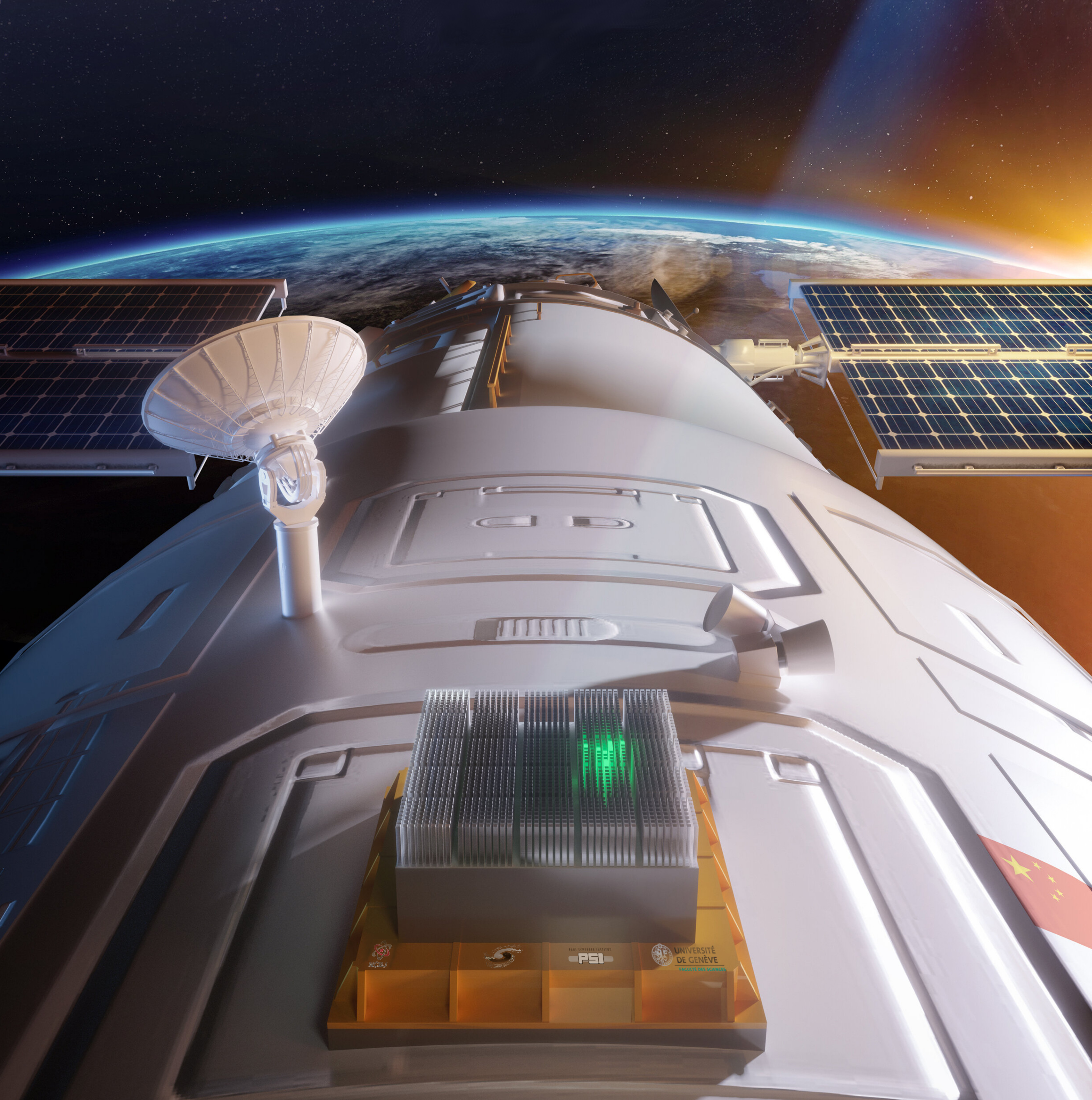
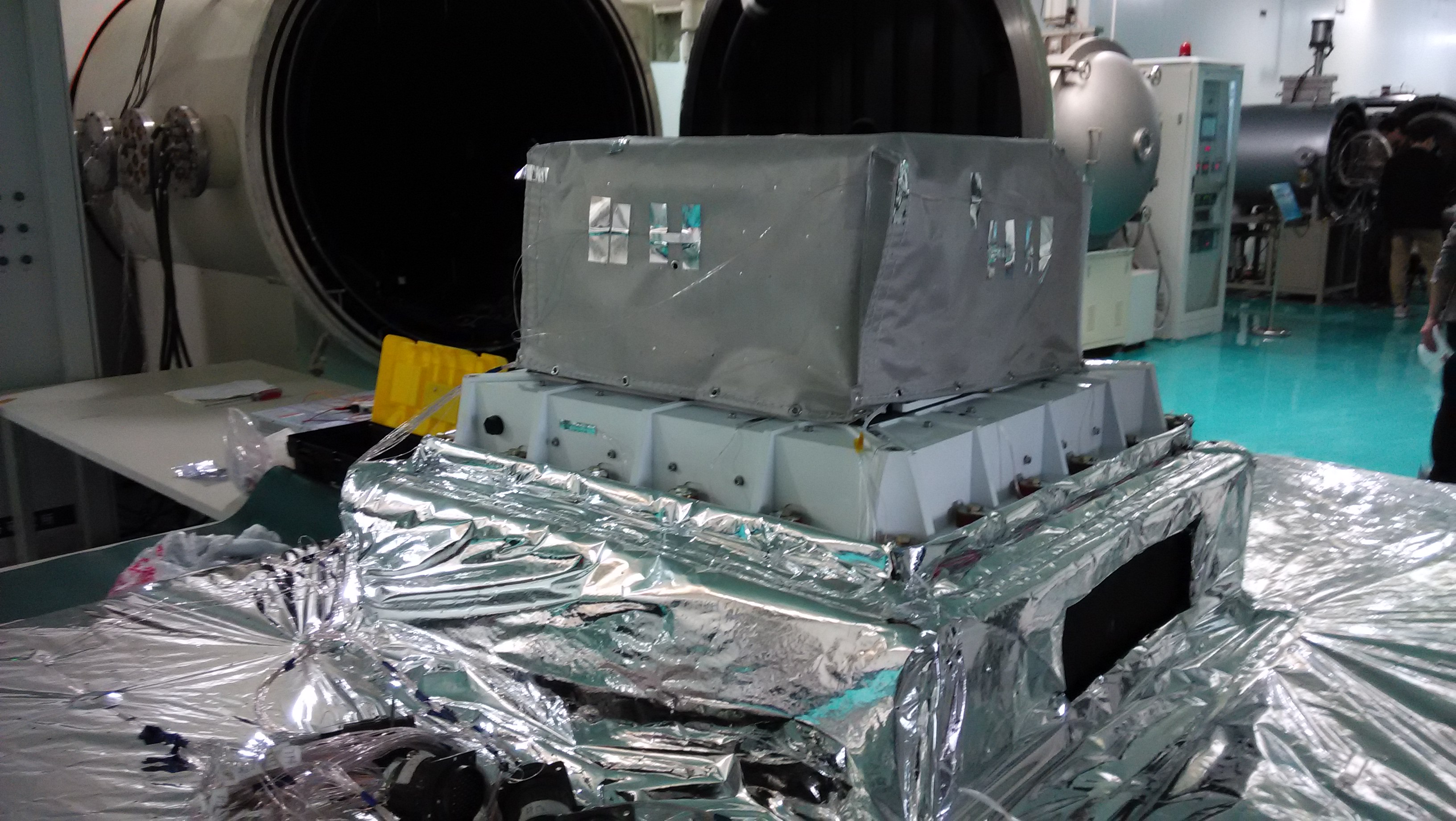
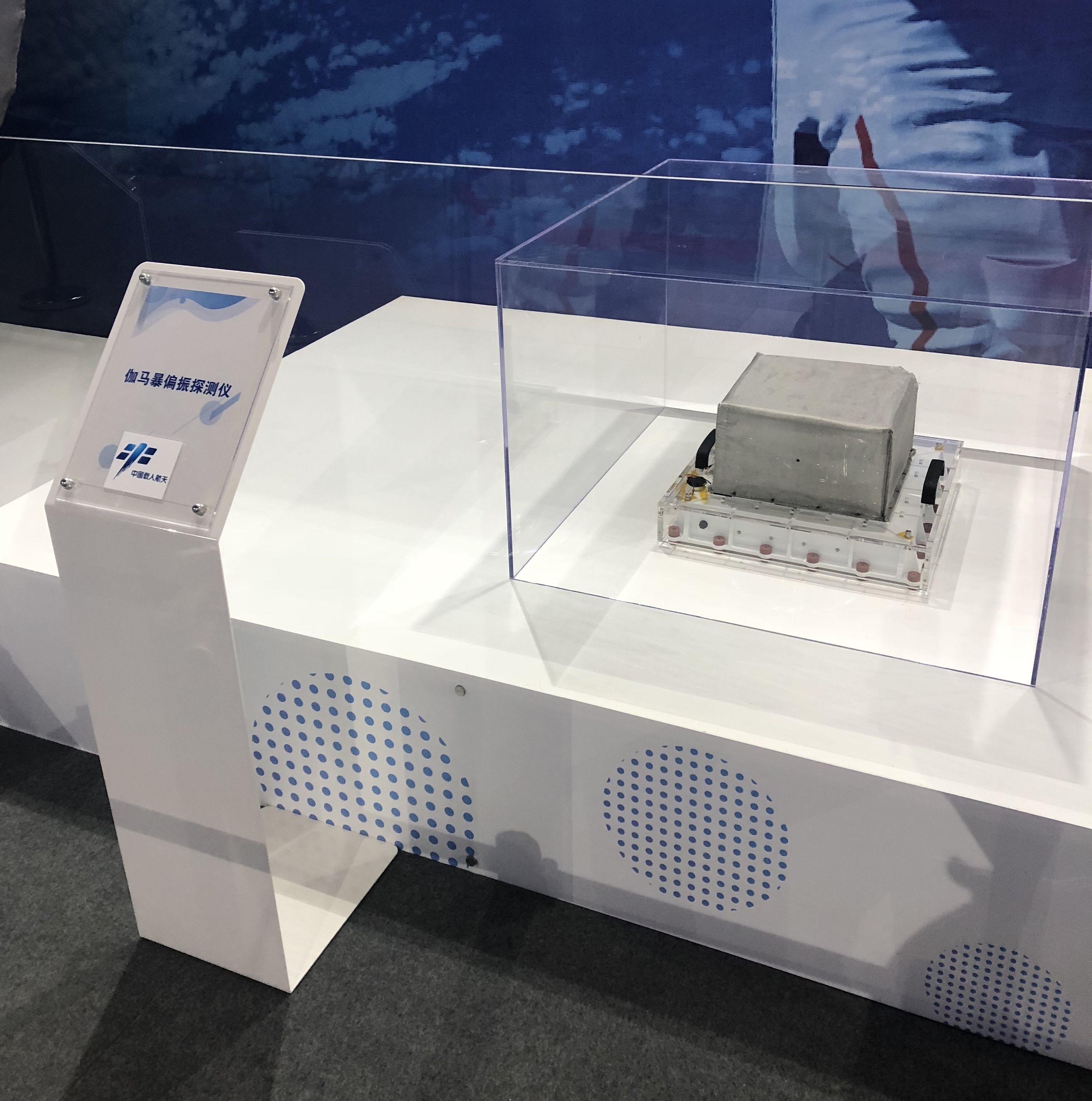
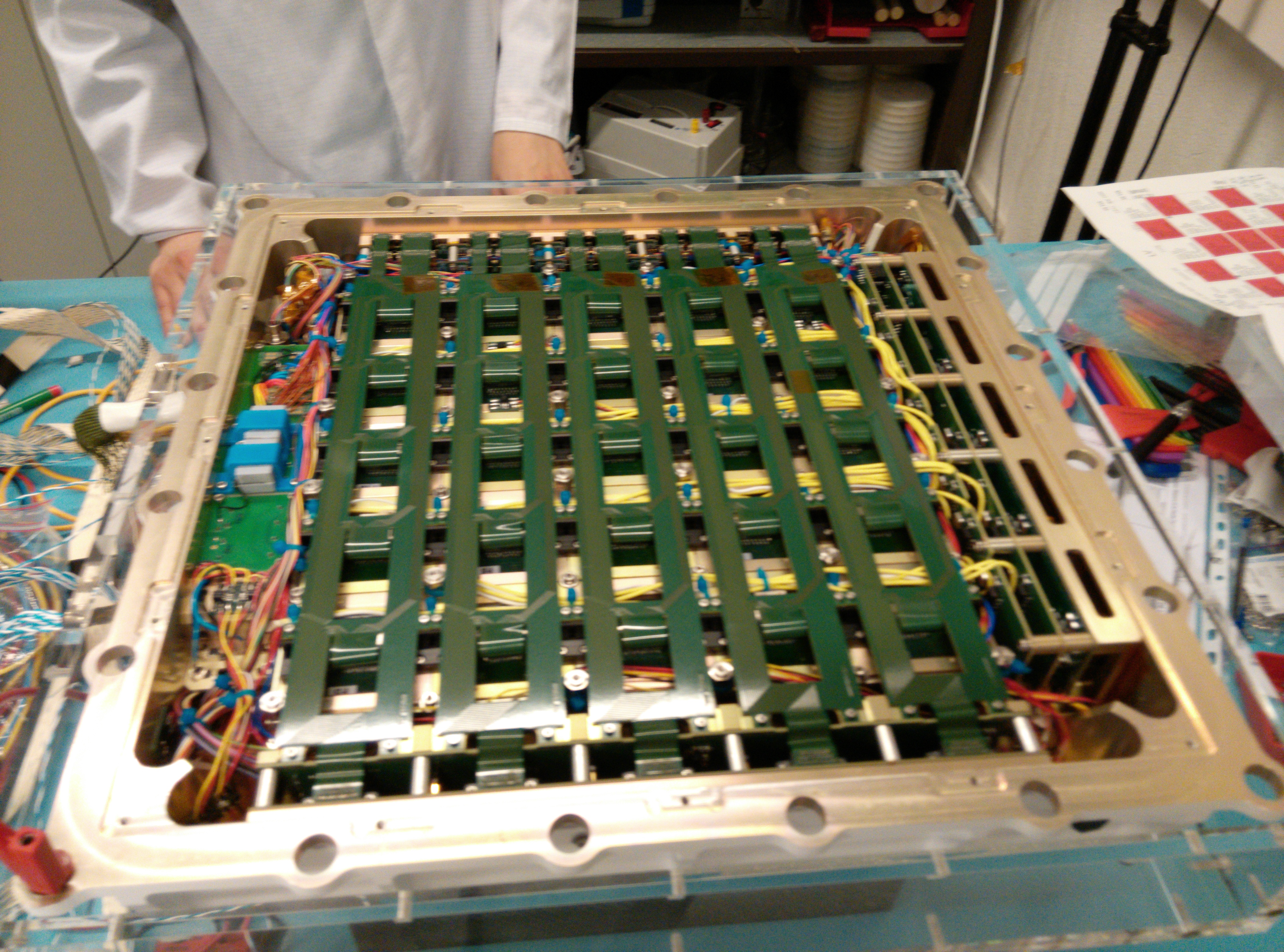

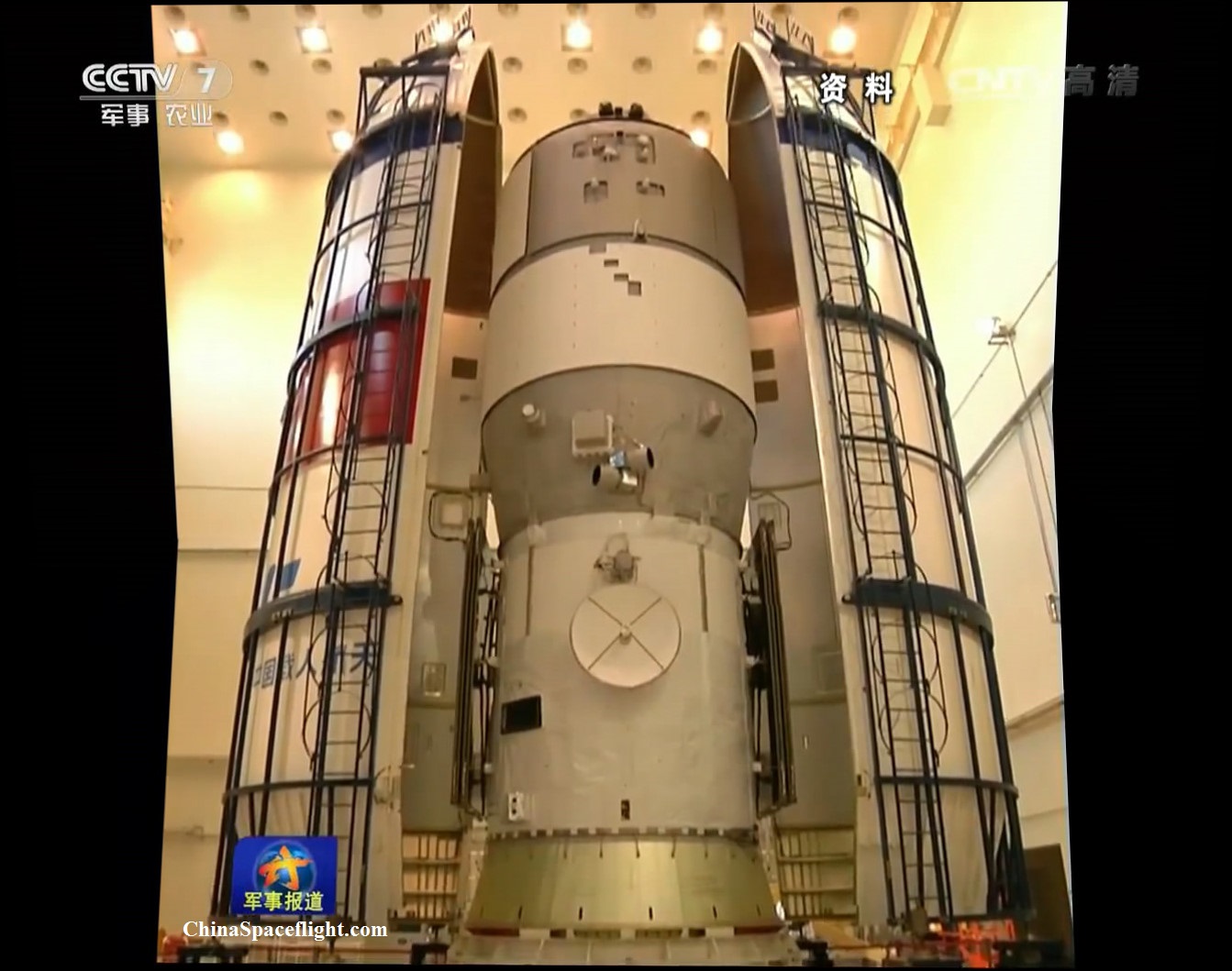
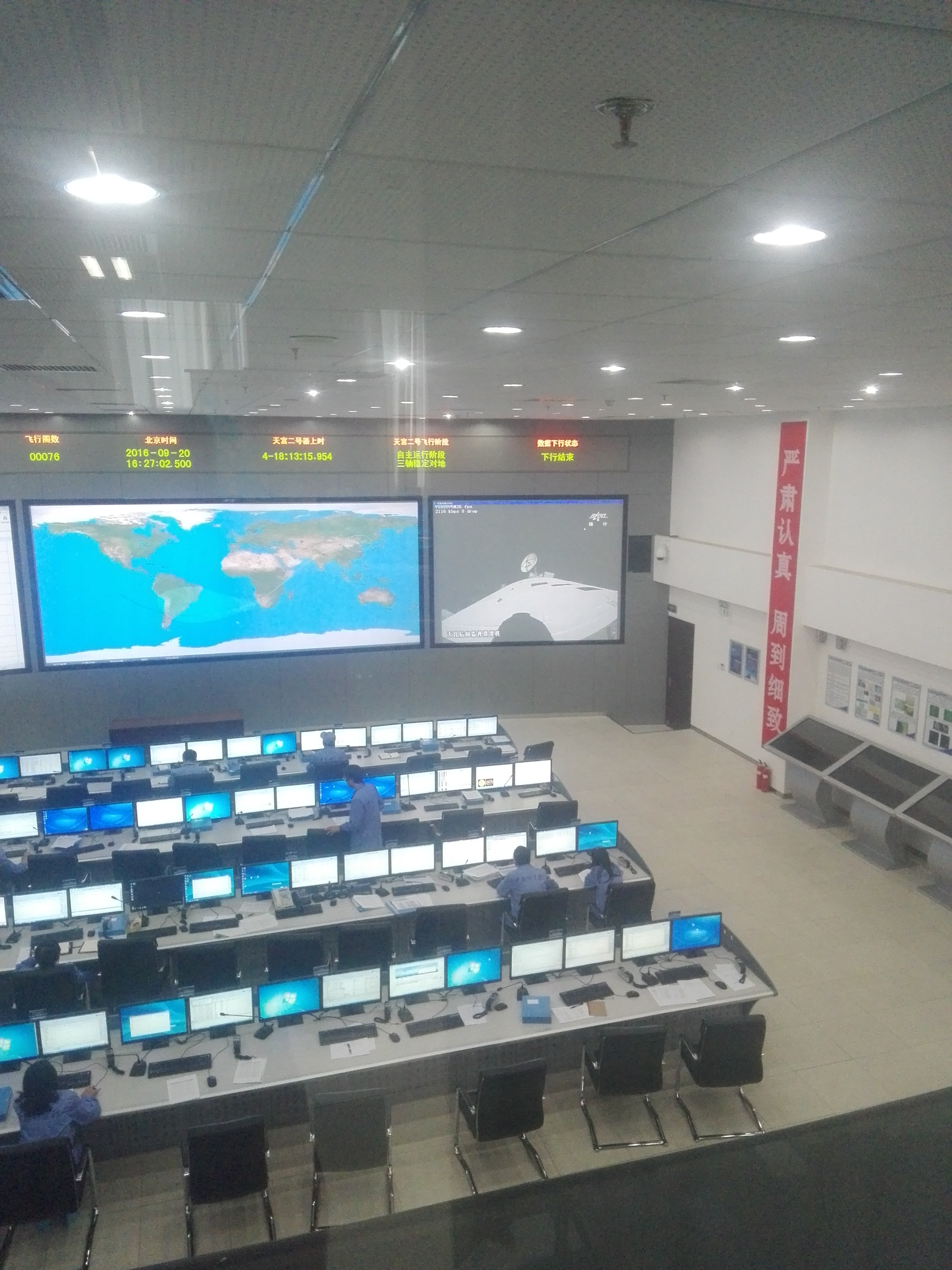
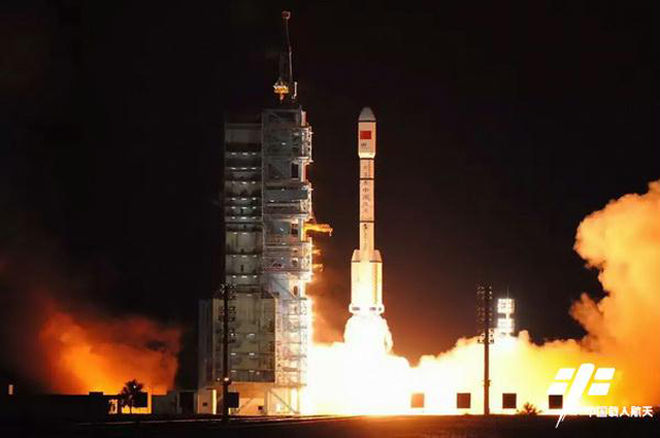
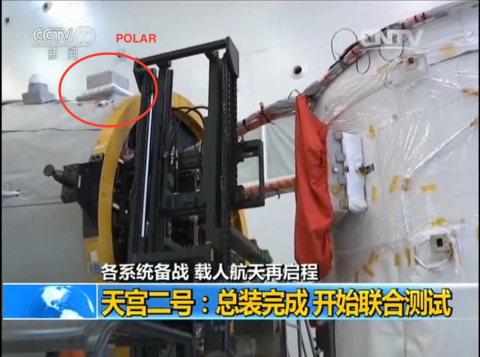
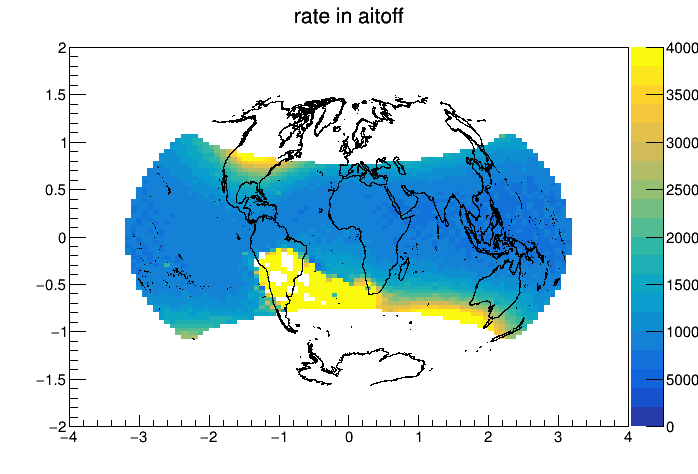

The POLAR detector
The POLAR Detector Design is based on the following requirements:
- A simple and compact instrument that:
- relies on a given burst position and spectrum
- or provides a crude estimate in case of stand-alone observation
- Dedicated for GRB observations only, thus needs:
- a large effective area,
- a large modulation factor
- a large field-of-view.
- The energy range for the incoming photons needs to cover 50 keV to 500 keV, a region, where the Compton Scattering Effect is dominant.
These requirements lead to the basic design of POLAR:
- 1600 scintillating bars form a uniform array of 40x40
- Light, fast and low Z plastic scintillators are used, optimised for compton scattering
- The scintillator size of 6x6x200 mm matches the chosen readout photomultiplier MAPM8500 from Hamamatsu
- passive shielding will be used to protect POLAR against low energetic cosmic rays
- the main readout electronics will be housed under the detection target
- the detection target achieves:
- an effective area of 400 cm2,
- a modulation factor of about 35 percent
- and a field-of-view covering about one third of the sky
The POLAR collaboration
-
INSTITUTE OF HIGH ENERGY PHYSICS (IHEP), CHINESE ACADEMY OF SCIENCES
Tianwei bao, Junying Chai, Yongwei Dong, Minnan Kong, Siwei Kong, Lu Li, Jiangtao Liu, Xin Liu, Haoli Shi, Liming Song, Jianchao Sun, Ruijie Wang, Xing Wen, Bobing Wu, Hanhui Xu, Laiyu Zhang, Li Zhang, Shuangnan Zhang, Xiaofeng Zhang, Yongjie Zhang
Address: Yuquan Rd. 19B, Shijingshan district, Beijing
Phone: +86-10-88236415
Email: -
DPNC, UNIVERSITY OF GENEVA, GENEVA, SWITZERLAND
-
PAUL SCHERRER INSTITUT, VILLIGEN, SWITZERLAND
-
ISDC DATA CENTER FOR ASTROPHYSICS, UNIVERSITY OF GENEVA, GENEVA, SWITZERLAND
-
NATIONAL CENTRE FOR NUCLEAR RESEARCH, SWIERK, POLAND
Publications
-
Development of the Next Generation Space-based Compton Polarimeter and Energy Resolved Polarization Analysis of Gamma-Ray Bursts Prompt Emission
Nicolas DE ANGELIS
Doctoral Thesis UniGe Sc. 5785 (2023) [Other link] -
Energy-dependent polariza- tion of Gamma-Ray Bursts’ prompt emission with the POLAR and POLAR- 2 instruments
Nicolas DE ANGELIS et al.
Proceedings of Science - 38th International Cosmic Ray Conference (ICRC 2023) 444 619 (2023) [arXiv]
-
Gamma-Ray Polarimetry of the Crab Pulsar Observed by POLAR
Hancheng LI et al.
Monthly Notices of the Royal Astronomical Society stac522 (2022) [arXiv]
-
Polarization measurements of the Crab Pulsar with POLAR
Hancheng LI
Proceedings of Science - 37th International Cosmic Ray Conference (ICRC2021) 395 (585) (2021)
-
The POLAR gamma-ray burst polarization catalog
Merlin KOLE et al.
Astronomy & Astrophysics (2020) [arXiv]
-
Phase-resolved gamma-ray spectroscopy of the Crab pulsar observed by POLAR
Hancheng LI et al.
Journal of High Energy Astrophysics 24 12-22 (2019) [arXiv] -
Time-resolved GRB polarization with POLAR and GBM, Simultaneous spectral and polarization analysis with synchrotron emission
J. Michael BURGESS et al.
Astronomy & Astrophysics 627 (A105) (2019) [arXiv] -
Detailed polarization measurements of the prompt emission of five gamma-ray bursts
Shuang-Nan ZHANG et al.
Nature Astronomy 3 (3) 258-264 (2019) [arXiv]
-
In-orbit instrument performance study and calibration for POLAR polarization measurements
Zhengheng LI et al.
Nuclear Instruments and Methods in Physics Research 900 8-24 (2018) [arXiv] -
Design and construction of the POLAR detector
Nicolas PRODUIT et al.
Nuclear Instruments and Methods in Physics Research 877 259-268 (2018) [arXiv]
-
Instrument performance and simulation verification of the POLAR detector
Merlin KOLE et al.
Nuclear Instruments and Methods in Physics Research 872 28-40 (2017) [arXiv]
